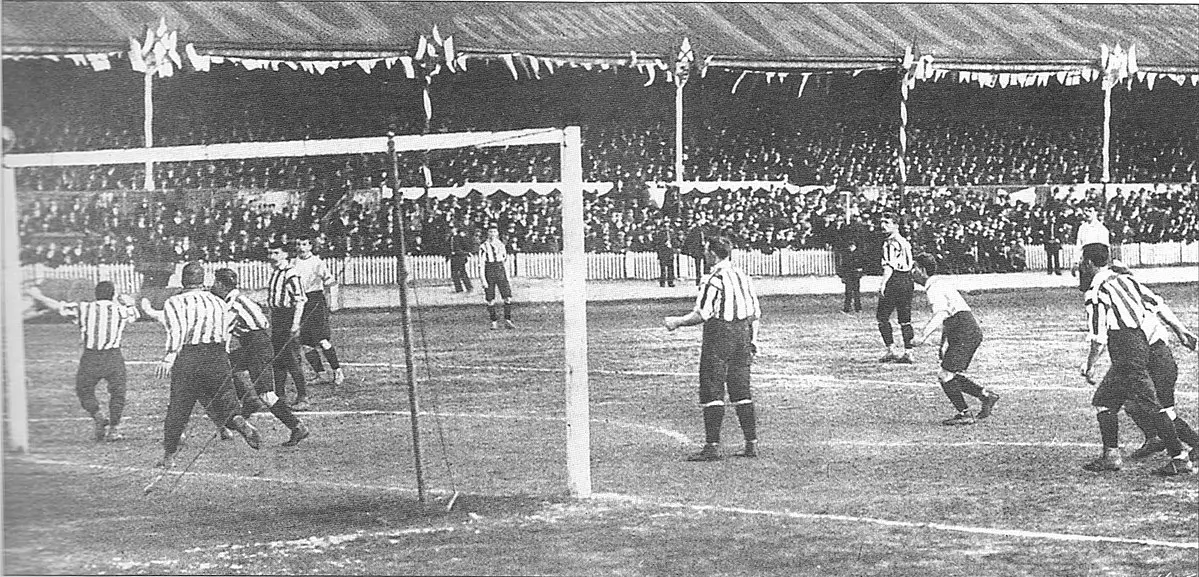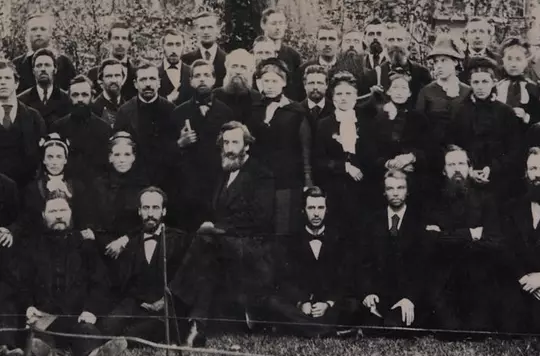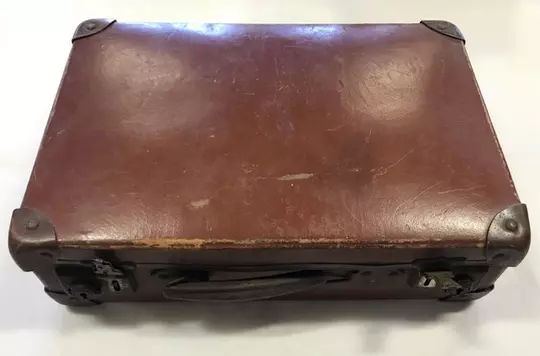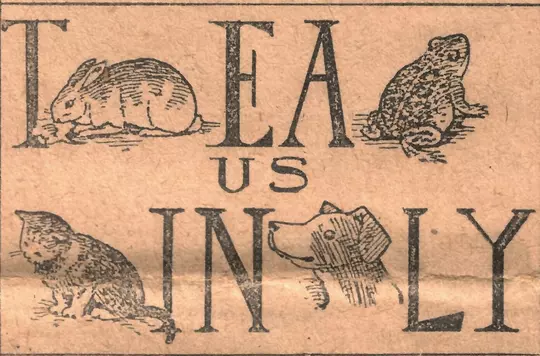International Heritage Centre blog
Davie Haddow, the converted international footballer
Davie Haddow, the converted international footballer
Many of you will have been enjoying the UEFA Euro 2020 championship. Seeing so much football on the television reminded me of an article that caught my eye while I was looking for something else in our historic issues of The War Cry back before Covid changed the world that we all live in. This article, from 10 January 1903, was titled ‘International Footballer: A recent capture at Whifflet.’ It was an interview with Davie Haddow who, the article tells us, was a “once famous Internationalist.”
In his own words Haddow said that “I was once what the world calls popular. The newspaper-men wanted to talk to me. My life-story was published in the sporting papers, and my footballing gave rise to a good deal of comment. I was a professional footballer, and, I must add, a professional drunkard!.” Haddow goes on to tell his life-story again, but this time for an evangelical newspaper rather than the sporting press: his birth at Whifflet, near Glasgow, his youthful enthusiasm for football that carried him to England and Derby where he became a professional in the 1890-1 season and where he “learned to drink.” Haddow says he “returned to Glasgow an habitual drunkard, and assisted the Glasgow Rangers till 1895.” He “figured twice in the International against England” but then moved to a string of English clubs including Burnley and “a short time for Tottenham Hotspur.”
Upon his return to Scotland he found that “the football game, the plaudits of thousands, and afterwards the social function; the drinking and blaspheming had shattered my principles and weakened my determination.” It was then, at the end of 1902, that he was converted at the Whifflet Salvation Army barracks. He testified that this had been “the best eight weeks of my life (and his face beamed with joy of salvation) [and] I intend, by the grace of God, to become a Blood-and-Fire Salvationist and an out-and-out Soldier for Jesus Christ.”

Luckily for anyone wanting to find out more about Davie Haddow, generations of football enthusiasts have collated statistics and written histories of clubs, players and championships. Much of this is online via any number of websites, including Wikipedia, where much of Davie (or David) Haddow’s interview with The War Cry is substantiated. Here we find that he played as goalkeeper and, while he did indeed play twice against England, one was for the Scottish Football League XI, so not technically for the national team.
So he was only capped once for playing for his national team in a game against England at Celtic Park in Glasgow on 7 April 1894 (the game ended in a 2-2 draw). His longest professional relationship was with Rangers which lasted from 1891–1895 during which time he appeared in 66 games and won a Scottish Cup and two Glasgow Cups. Another highlight seems to have been the years 1899-1901 when he played in goal for Tottenham Hotspur as a replacement for the injured George Clawley, when Spurs won the Southern Football League title. However, press coverage from this time seems to regret the absence of Clawley, who was back in goal for Tottenham’s victory against Sheffield United in the 1901 FA Cup final.

Unknown author, Public domain, via Wikimedia Commons (https://commons.wikimedia.org/wiki/File:Facupfinal1901-D.jpg)
Despite Haddow’s interview not pulling back from the seamier side of his life as a professional footballer, he neglected to mention his involvement in an altercation in 1890 between his team Albion Robers and players from Airdrie. His professional career seems to have ended with the 1901-1902 season, when he had moved from Tottenham to Albion Rovers. His conversion to The Salvation Army late in 1902 was not only reported in The War Cry. Using the gift to historians which is the digitised newspapers available via the British Newspaper Archive (BNA), I have been able to find several references to Haddow as a Salvationist.
The Dundee Evening Telegraph reported on his ‘capture’ by The Salvation Army only four days later than The War Cry on 14 January 1903 and tells us he had returned to his former trade of blacksmith. While the word ‘capture’ was widely used by The Salvation Army in an earlier period to refer to its converts, it is apparent from this article that the word ‘capture’ was used here to refer to players transfer to other teams, as in the announcement elsewhere on the page of ‘Arbroath’s Latest Capture: Willie Stewart, the Ex-Dundee Man.’ So ‘Capture’ is being used ironically, as if Haddow has transferred to The Salvation Army! The Lancashire Evening Post also reported later that month, in its section ‘Pertaining to Prominent Players,’ of Haddow ‘joining the ranks of The Salvation Army.’
The BNA also brought up a number of articles that throw more detail on Haddow’s story than we get from The War Cry or the local press. It seems that the name Haddow was well connected to The Salvation Army in the area around Whifflet. At nearby Bellshill, the bandmaster and songster leader at The Salvation Army corps were George and Samuel Haddow respectively, who also appeared together as ‘The Haddow Brothers’ in the 1920s and 1930s. I have been unable to connect these with Davie Haddow but, as he was born at Whifflet in around 1869, it is possible that the Haddow family had links to The Salvation Army prior to Davie’s conversion (or ‘transfer’) in 1902.

The BNA also reveals a story from the Airdrie & Coatbridge Advertiser in 1905 of a David Haddow, a rivetmaker aged 37, of Coatbridge who was prosecuted for “failing to effectively educate his four children” aged between 8 and 13 who had been attending school in Whifflet. He was fined 20s (although a story in a later issue of the Advertiser cast doubt on the accuracy of the prosecution). We can’t know if this is the same Davie Haddow as the footballer, but the similarity of age, profession and location make it seem very likely.
The final reference I have found to Haddow is also from the Airdrie & Coatbridge Advertiser for 18 August 1906, reporting on his return to football in goal for Albion Rovers, the team he played for prior to his conversion. He is described as “the once famous international goal-keeper,” which supports his description in The War Cry. It goes on to reinforce that “During the last few years Mr Haddow has been devoting his leisure hours to evangelistic work, being a very enthusiastic member of the Whifflet Branch of the Salvation Army. Mr Haddow believes, and rightly too, that his good work in connection with the Salvation Army will be in no way hindered by his return to the football field and so he will once again don the jersey for the Albion Rovers and at the same time continue his Gospel work.” However, Haddow’s return to football seems to have been short-lived as none of the football stats websites include him after 1902. I have been unable to find any further reference to Haddow playing professionally before his death, possibly in 1955.
An interesting aside to my research into Davie Haddow was my discovery of the number of temperance teams that were playing in the Scottish leagues in the 1880s and 1890s. These teams indicated their commitment to teetotalism with names such as Glasgow United Abstainers, Dunipace Temperance Association FC and United Abstainers Athletic. This drew a parallel with stories in the press today about teetotal national players, or those at least drinking less (although I’m unaware of any professional British clubs whose players wholly abstain from alcohol!).
This is all in the spirit of Davie Haddow’s story (from ‘professional drunkard’ to Salvationist) and the spirit of the 1906 article from the Advertiser about Haddow’s conversion which ended with the opinion that “If more Christian workers would interest themselves in football it would tend to raise the sport and make better men of players and spectators alike.”
Steven
June 2021

All the World’s a Fair: The World-Wide Salvation Army Exhibition, 1896
125 years later, we revisit the 1896 exhibition in the context of the nineteenth-century history of World Fairs.

Dedicated Followers: Uniforms and The Salvation Army’s Attitudes to Fashion
Everybody recognises a Salvation Army uniform. But what was behind their introduction in the late nineteenth century?

The accession in the suitcase
For archivists, the arrival of an unexpected parcel tends to raise mixed emotions...

‘the creatures He made’: Animal Welfare in Salvation Army History
As concern about animal welfare grew in the late nineteenth century, the early Salvation Army took an active part in promoting humane treatment of animals.